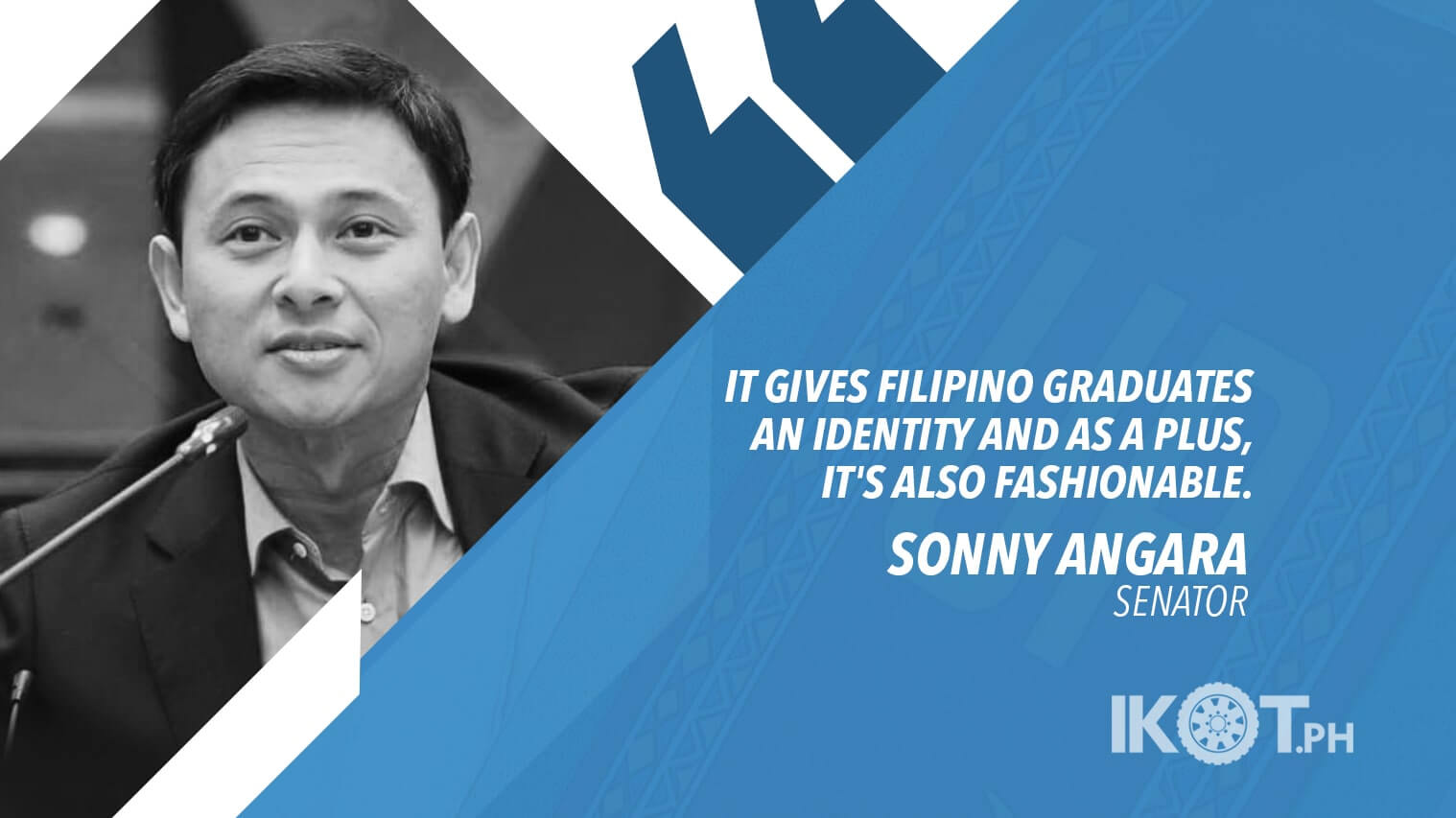Even as the Department of Education (DepEd) is deliberating on the use of the sablay as the standard garb for graduation rites, Senator Sonny Angara encouraged more schools to adopt this as a means to promote Filipino heritage and for practical purposes.
Angara said local government units around the country could take their cue from the Pasig City government which already uses the sablay in the graduation ceremonies of their public elementary and high schools.
“The sablay not only represents the rich cultural heritage of the Philippines, but is also more suitable for our climate.”
“This is one idea that was well thought of, long overdue, and ought to be supported. The sablay not only represents the rich cultural heritage of the Philippines, but is also more suitable for our climate. It also gives Filipino graduates an identity and as a plus, it’s also fashionable,” the veteran legislator said.
DepEd undersecretary for administration Alain del Pascua, in an aide memoire, batted for the use of the sablay in place of the toga for graduation ceremonies.
Pascua argued that the toga, with its deep Western roots, “is not Filipino” and “does not inspire loyalty to the nation.”
The seasoned lawmaker added that the use of the sablay could also boost local textile production and spur a resurgence of weaving traditions.
“We should encourage and support efforts to promote the strengthening and propagation of Filipino heritage, culture and traditions. In many areas of the country, including indigenous communities, weaving is their source of livelihood and has been around for generations,” the senator said.
He noted that there could be different designs for the sablay in the various regions, provinces, cities, municipalities or even towns.
“The designs could be based on the heritage of the local indigenous peoples.”
“The designs could be based on the heritage of the local indigenous peoples for instance or the ancient writing script baybayin. The sablay will be their canvas. It will bear the signature of a particular area or culture. It will be easily identified around the world as being uniquely Filipino,” Angara said.
He has been spearheading a “Tatak Pinoy” or made in the Philippines initiative that seeks to encourage innovation among the different industries in order to add value to the products being offered and to improve competitiveness, among others.

